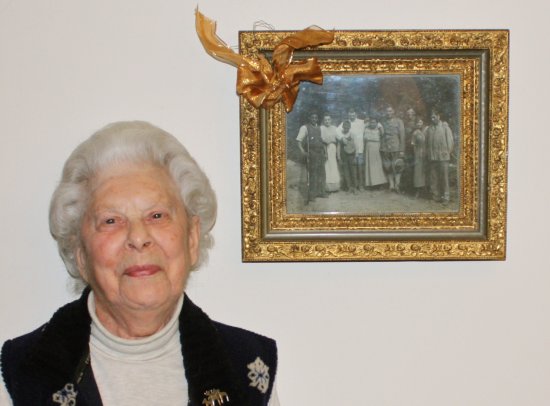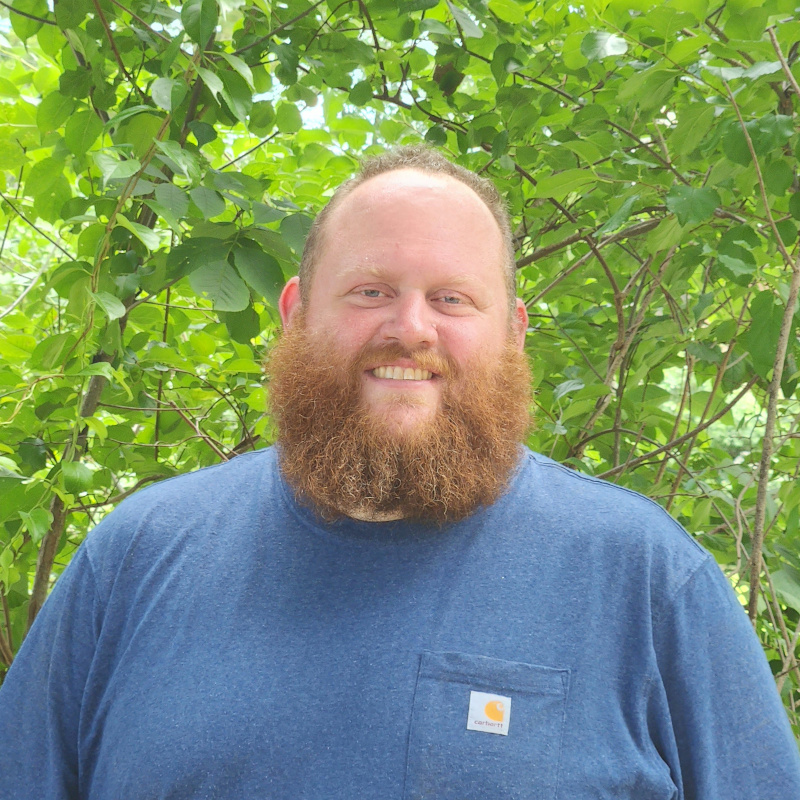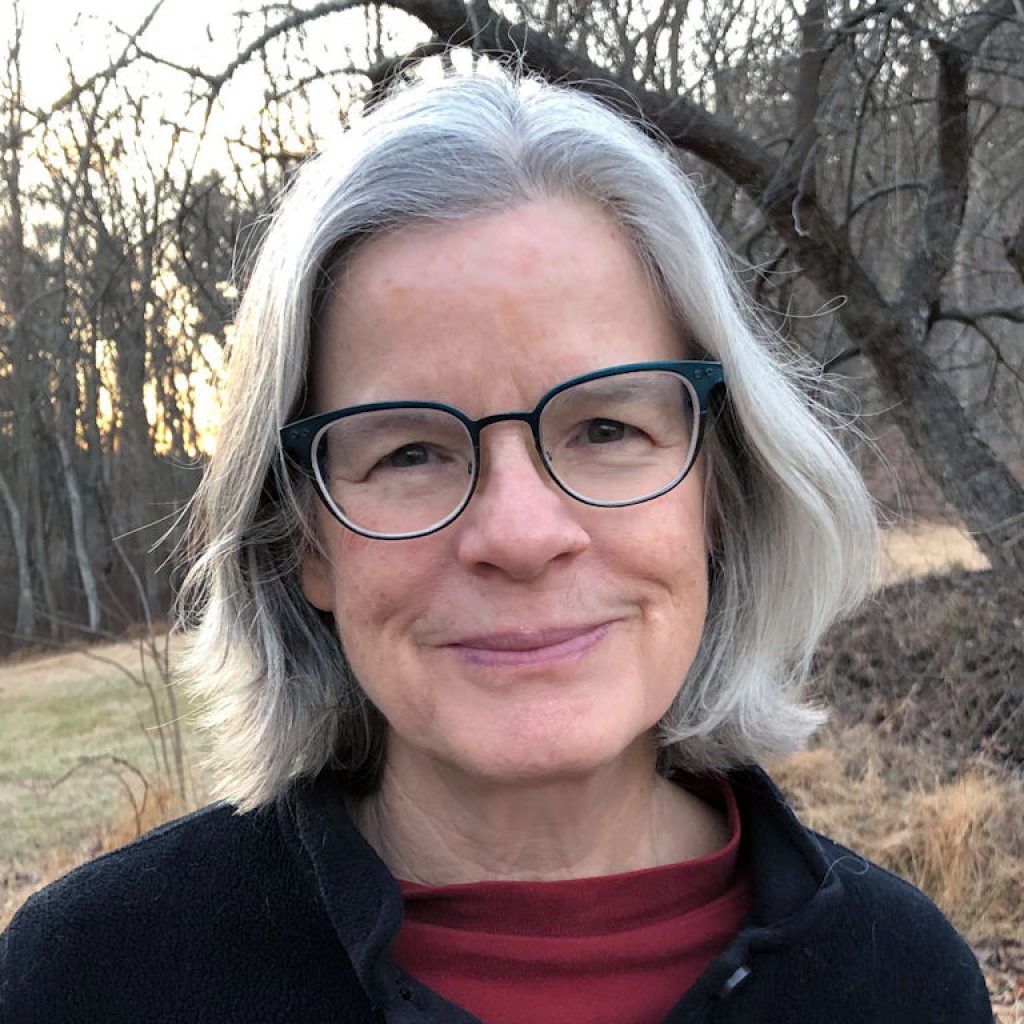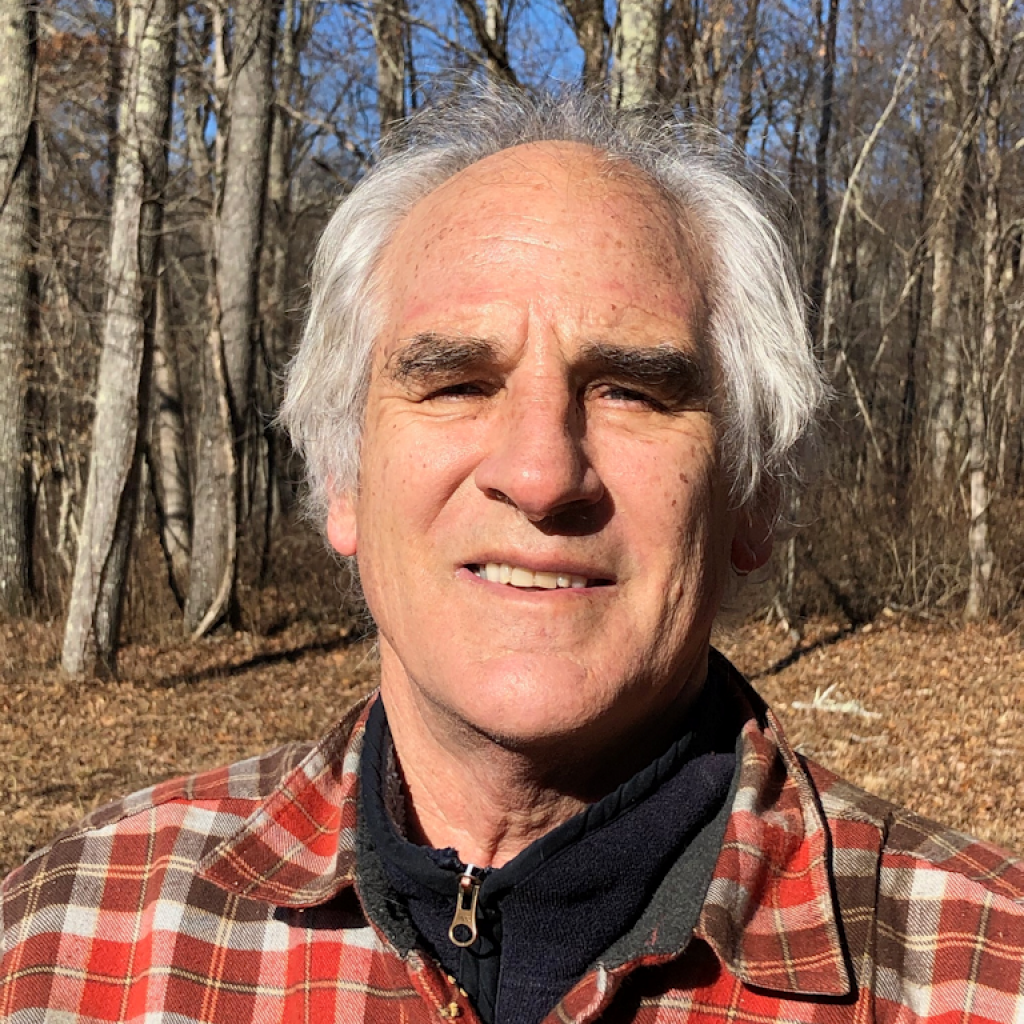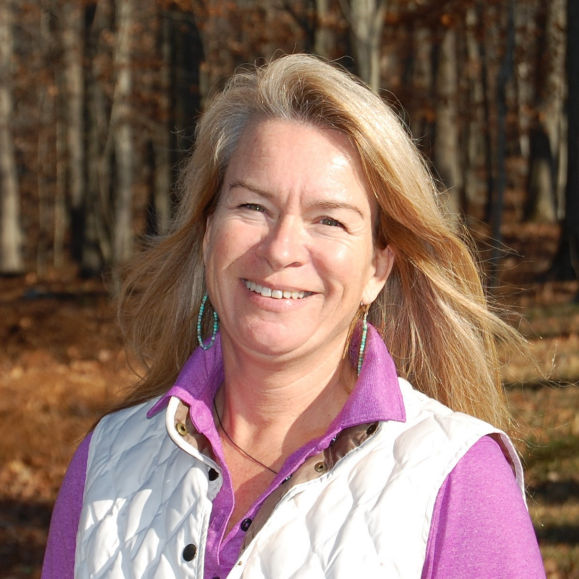•December 2011•
2012 Photo Contest Deadline is Jan 31
Photo Contest Sponsored by Local Land Trusts
The land trusts of Lyme, Old Lyme, Essex, Salem, and East Haddam are inviting amateur photographers to focus on our pictorial & scenic countryside and to submit their photos to the Seventh Annual Photo Contest. The great beauty of our towns shows up repeatedly in the great paintings of the American Impressionist movement. Photography is another way to remind ourselves of what we have and to show how important it is to protect and preserve that heritage.
This contest is being funded with the generous support of Lorensen Toyota, Oakley/Wing Group at Smith Barney, Evan Griswold at Coldwell Banker, Ballek Garden Center, Essex Savings, Bank, Murtha Cullina LLP and ChelseaGroton Bank.
Judges will award $100, $50 and $25 cash prizes for each of the following categories:
-Landscapes/Waterscapes
-Plants
-Wildlife
-Cultural/Historic
-Any subject for Young Photographers, below age 15
In addition to the above noted prizes, a special $100 award will be given in memory of our former judge, John G. Mitchell, for the best photograph that promotes and supports our environment and biodiversity.
The three independent judges are William Burt, a naturalist who has won acclaim for his books of wildlife photography: Rare and Elusive Birds of North America, Shadowbirds, and his recently released Marshes: The Disappearing Edens. Amy Kurtz Lansing, Curator at the Florence Griswold Museum and a Yale University doctoral candidate in the History of Art. She is also the author of Historical Fictions: Edward Lamson Henry’s Paintings of Past and Present. Rudy Wood-Muller, a photographic illustrator and designer. His photos were exhibited at the New York World’s Fair in 1964 and the Rochester Institute of Technology. A group of his photographs have been selected to be part of the Permanent Collection of the Metropolitan Museum of Art in New York.
The deadline for submitting photographs is January 31, 2012. For questions, entry forms and a copy of the contest rules, send an e-mail to landtrustphotos@yahoo.com. To see all of last year’s winning photos, go to http://landtrustsphotos.shutterfly.com/
Below you will find information about our annual photo contest.
2011-12 Contest Rules
•November 2011•
Czikowsky Legacy of Hard Work and Civic Commitment Preserved in Lyme Landscape
By Richard Melchreit
In 1900 Eugene and Annie Czikowsky, a young German couple from Brooklyn, moved with their children to Hamburg Cove to find “sweet water” for an ailing daughter.
In the century since then, members of the Czikowsky family became legend in Lyme for their hard work as farmers, butchers, and storekeepers — roles that made them an integral part of the fabric of the town — and later generations of the family were recognized as educators and civic minded citizens in Lyme.
Recently their descendants continued a tradition of devotion to the land through generous preservation of parts of their farm.
Eugene and Annie bought land to farm for $700. It included a small wood frame building on Joshuatown Road that became the home for their nine-member family. It also became a grocery and general store, which the Czikowskys soon opened and became the primary source of household provisions for neighbors living nearby.
Rosemarie Czikowsky Fox, a granddaughter of Eugene and Annie, recounts how the men would wake before dark, milk the herd, tend store or work the farm all day, cut wood, and then make deliveries late into the night. They would drive around town and stock pantries and iceboxes (or the refrigerators of “early adopters”). The Czikowsky women tended the store, worked the huge garden that grew produce to stock its shelves, and churned butter from the family herd‘s milk.
By dint of backbreaking work, the family not only supported themselves, but in true American immigrant style, they saved enough to purchase adjoining land along the southern slopes of Mount Archer.
Eventually their holdings included their original farm (with its fields running down to the shore of Hamburg Cove) and extended along the heights of Mount Archer above the west bank of Upper Hamburg Cove to the Joshuatown Bridge. They then purchased a 90-acre parcel north of the bridge known as the Hoppy property.
After Annie and Eugene died in 1944, the unmarried adult children, Minnie, Herbert (Herbie), and the younger Eugene inherited the farm. They continued to run the store and farm until the last, Herbie, died in 1973 in a tragic farming accident on the Hoppy land, a part of the farm he especially loved.
As time passed, the store closed, and the pastures and fields were sold. After Herbie’s death only the Hoppy property remained, and it reverted to its natural state. The land then passed to the surviving six grandchildren of Eugene and Annie.
This third generation of Czikowskys considered subdividing the land and selling it, but several of the surviving family members, including Rosemarie Fox, wanted it kept as open land. They appreciated its natural value and preserved it through a coordinated mixture of donation and bargain sales to a coalition of buyers made up of the Town of Lyme, the Lyme Land Trust, and The Nature Conservancy.
The Hoppy Property has several important features that make it particularly valuable for preservation.
It runs a quarter-mile along the west bank of the Eightmile River, a federally-designated Wild and Scenic River. It is divided into floodplain with riverine habitat and a steep grade upland forest that runs up the flank of Mount Archer to the Mount Archer Woods Preserve, making it part of a 1200+ acre tract of unfragmented woodland. The uplands are home to beautiful stands of oak, hickory and beech, while the floodplain supports a host of wetland native plants, including cardinal flower and swampwort.
Rosemarie Fox was born and grew up along the Eightmile River in a house just south of Moulson’s Pond. Her son, Jeff Rowe, and his wife Kathy now live in the house where they raised two children, who also live in the area, making this the fifth generation of Czikowskys to live around the “sweet water” of Lyme. Jeff has been the steward of Moulson’s pond for several years and maintains its osprey platform.
If you want to learn more about the Czikowsky family and their legacy, go to the Lyme History Archive at Lyme Public Hall, open Tuesdays 10 am to noon.
Rosemarie Czikowsky Fox, a generous donor of family lands to the people of Lyme. Over her shoulder is a picture taken in about 1915 of her grand parents and their children, including her father at the far left.
•October 2011•
Lyme Land Trust Dedicates New Chestnut Hill Preserve
More than 45 Land Trust members and guests celebrated Lyme’s newest protected open space on the sunny morning of Oct. 15 with the dedication of the Chestnut Hill Preserve, a 40-acre parcel of lush wooded upland on the south side of Sterling Hill Road.
The event was marked with a ribbon cutting ceremony that formally opened the preserve’s new trail, which winds among huge boulders left by prehistoric glaciers, along a forest stream with a small waterfall, and over spines of ledge rock to connect to the trail system in the adjacent Nehantic State Forest.
Land Trust President George Moore spoke briefly, thanking Land Trust Stewardship Chairman Don Gerber and the volunteers who cleared the new trail so quickly after the Land Trust had acquired the parcel.
He also singled out for special thanks Land Trust Vice President Temp Brown, who with great patience over an extended period of time led the negotiating process with the prior owners, and Secretary George Lombardino, who shepherded the preparation of the grant application.
“They both worked hard to make this happen,” he said. He also singled out Land Trust Project Manager Lisa Niccolai, who actually wrote the application for a state grant to help cover the cost of the purchase. “The truth is,” he said, “much of the credit for this grant is attributable to Lisa’s grant writing skills.”
Carolyn Bacdayan, who as a youngster spent vacations with a Sterling relative who lived nearby, spoke about the history of the region and the many families who lived on, farmed, and developed the area, including Brown Hill and Sterling Hill. She explained that in the late 1600s and early 1700s the area was called Chestnut Hill because of a concentration of chestnut trees native to the area. The chestnut was important to early European settlers because it provided strong timber for posts and beams for building homes and barns. (Because of blight, these trees today rarely reach maturity, but the Land Trust has plans for re-introducing a modified strain to the new preserve.)
After the ribbon cutting, former Land Trust Presidents Linda Bireley and Anthony Irving led a walk of the new Orange Trail, describing the flora and geology of the area and explaining its use as farming and pasture land during the 18th & 19th centuries.
Funding for the $280,000 purchase will be from a $140,000 grant from the State of Connecticut Department of Energy & Environmental Protection (DEEP) and a matching pledge from the HJ Promise Foundation. Additional generous donations from Land Trust members provided bridge funding for the closing in anticipation of the DEEP grant and other pledges.
The land consists of wetlands and streams, mixed oak forest, field reverting to forest, and dramatic rock ledges. The wetlands and streams that drain this property are part of the Falls Brook Watershed that feeds the nationally recognized Wild & Scenic Eightmile River at Hamburg Cove.
The Nehantic State Forest abuts the parcel on the east and south, and on portions of the western side . The remainder of the western edge is bounded by a wetland already protected by an easement held by the Lyme Land Trust.
Protecting this parcel from development reduces forest fragmentation, saves wildlife habitat, complements existing land protection strategies, protects water quality in the lower Connecticut River Estuary Region, and keeps the view corridor along Rt. 156 from being marred by development on Sterling Hill.
The parcel was identified in Lyme’s 2001 Plan of Conservation and Development and by the Connecticut River Estuary Regional Planning Agency as an area that should be protected. According to the Connecticut Natural Diversity Database, State and Federal endangered species and significant natural communities are known to exist in the abutting State Forest and surrounding lands.
The Chestnut Hill Preserve brings to 32 parcels totaling 573 acres owned and preserved as open space by the Lyme Land Trust.
The Land Trust also holds 64 conservation easements covering 2,008 acres and manages another 235 acres owned by The Nature Conservancy, bringing to more 2,800 acres in Lyme protected as open space that the Land Trust is stewarding for future generations.
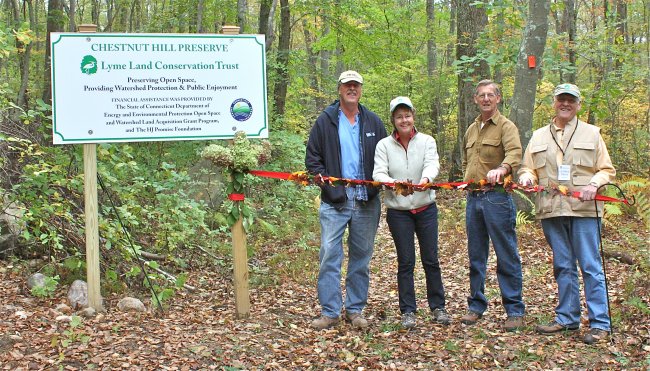
State Representative Marilyn Giuliano cuts a ribbon of oak leaves to open the Chestnut Hill Preserve, along with (from the left) Lyme Selectmen Steven Mattson and Parker Lord and Lyme Land Trust President George Moore.
•July 2011•
July Hikers Climb to the “Best View in Lyme”
Each season has its treasures for the Connecticut hiker. On a recent July 9, Lyme residents Peter Weigle and Mary Guitar led a group along the Plimpton Preserve Trail in Hamburg.
Some of July’s treasures were Indian Pipe and Wintergreen blooming all along the woodland trail, and red-shouldered hawks crying out at us when we ventured too close to their nest.
The Plimpton Trail is initially steep but quickly settles down to a pleasant incline through mixed forest. Near the top of the hill is a large outcropping of granite from which we could see across the green canopy of trees to the river and Essex and beyond.
Some of the sights that we observed along the trail were evidence of ancient history—large boulders distributed through the forest known by glaciers, known as “erratics”—while others showed signs of much more recent activity. For example, the old toll road that predated Route 156 runs through the property, and near the toll road are springs that at one time were the main source of water for Sterling City. In addition, Peter Weigle pointed out several areas of rock ledge that still display holes from the “feathers and wedges” that were used to cut flat pieces of rock for use in stone walls and foundations.
The Plimpton Preserve Trail is a moderately strenuous 1.5 mile loop. Parking is along Sterling City Road.
•June 2011•
Annual Meeting 2011
A Fine Day for 2011 Annual Meeting & Demonstration of Birds of Prey
One Fine Day was how a guest described the Land Trust’s forty-fourth Annual Meeting held on June 19th. 2011.
After a prolonged stretch of gloomy and rainy days, the sun came out and stayed with us as we entertained our members with a spectacular display of falconry.
The brief annual meeting and falconry event were held outdoors in one of the most beautiful settings in Lyme. It was an afternoon filled with nostalgia, camaraderie and entertainment. Our gracious host, Andy Baxter, provided delicious refreshments under a tent and encouraged members to visit the beautiful gardens on the property.
President George Moore addressing Land Trust members assembled for the 2011 Annual Meeting on a beautiful day in a bucolic setting.
Chairs were arranged in a large circle on the lawn so guests could choose sun or shade. The falconer brought several birds including owls, hawks, falcons and an eagle. Released off his arm, the birds soared up into the bright blue sky, circled, then tempted by the bait, dove back to ground in front of the delighted guests.
Earlier, George Moore, president of the Lyme Land Trust, recognized a few of the founders and pioneers in the Trust: – Shirley Howard, a founding director; Arthur Howe, the third president; Charlotte Barringer wife of the fourth president Rufus Barringer; Trudy Burgess, the granddaughter of William Moore the second president, accompanied by her daughter Gretchen and her mother Megan Eno.
Falconry expert Brian Bradley of Sky Hunters in Flight explains the hunting habits of owls to a transfixed audience at the Annual Meeting.
All in all there was something for everyone; a chance to meet and talk with old friends, an opportunity for children to run and play and then to be amazed by the beautiful birds of prey. It was Father’s Day, a wonderful opportunity for the family to honor dad with a special outing.
One Fine Day indeed.
****
Honoring the Pioneers & Founders of the Lyme Land Trust
Director Andy Baxter hosted a reception, before the annual meeting, to honor some special guests, pioneers and founders of the land trust movement in Lyme – people who helped the Lyme Land Trust grow and prosper in its’ first twenty years.
George Moore, current president, spoke of Shirley Howard and her husband William Moore: “As newcomers to Lyme, they and their friends did something newcomers seldom do. Instead of trying to make over their adopted town into something different, they worked to help it retain its’ rural and agricultural feeling. With their friends and neighbors they formed the Lyme Land Trust in 1967.”
He went on to say: “Shirley, the only remaining founder we are aware of, served as Secretary through 1981 and provided wise counsel to the first four presidents. The continuity and guidance she provided in the formative years was very important.”
Observing the recognition of Shirley’s contributions to the Land Trust, was daughter Megan Eno, granddaughter Trudy Burgess and great granddaughter Gretchen, all of whom live in Lyme.
Moore commented: “In land conservation we speak of preserving land in perpetuity. Shirley’s family is an example of why – saving the Lyme we love for future generations.”
##
The first president of the Lyme Land Trust was a founder, Frank B. Stephenson. Regrettably, we are unable to locate any of his descendants.
The late William G. Moore was the second President from 1970-1976. He went on to become an elected member of the state legislature and played a key role in founding the Gateway Commission which works to protect the Lower Connecticut River Valley. His granddaughter, Trudy Burgess, accepted a certificate citing his contribution as a founder of the Lyme Land Trust.
##
The third president of the Lyme Land Trust was Arthur Howe Jr. who served from 1974 to 1984.
In an earlier interview, Art had said the Land Trust had followed a deliberate policy of go slow and keep a low profile. Their aim was to earn the trust of the resident land owners and help them understand the Trust wanted to help them preserve the land they loved.
Recognizing Arthur Howe Jr., Moore said: “Art is typical of so many people in Lyme, volunteers who give generously of their time. He served on Planning & Zoning, the Lyme Fire Company and of course the Land Trust.”
##
The fourth president of the Land Trust was the late Rufus Barringer who served from 1982 to 1992.
Several years ago, Charlotte Barringer asked the Land trust to create the Rufus Barringer Education and Protection Fund in honor of her Rufus to which she contributed the initial funding. Sharlee recently confirmed that Rufus was concerned with the challenges the Trust would face in future; protecting easements and properties.
The Barringer Fund ensures the Land Trust will have the means to carry out our fiduciary stewardship responsibilities for the properties and easements entrusted to our care.
Sharlee accepted a certificate of appreciation citing the contribution made by her husband, Rufus Barringer a pioneer of the Lyme Land Trust.
##
One other pioneer was honored – Sally Bill, who passed away last year.
Sally served as Treasurer from 1976-1984.
Speaking of Sally, Moore said: “I have an indelible memory of an ailing Sally attending last year’s annual meeting on the arms of her son Fritz Gahagan and her grandson Ben. How she beamed when I mentioned that three generations of her family have served as Land Trust directors.”
“Sally did a wonderful thing for the Land Trust. She made a bequest in her will that a very meaningful amount was to go to the Lyme Land Trust and specified it should go to protect land and easements. Accordingly the money was credited to the Barringer Fund.”
Moore continued: “… it is not something we like to think about, our eventual passing, but bequeathing something to a cause that matters to all of us, even a small amount, can make a big difference. We are so grateful to Sally not only for the gift, but for reminding us that is this something we can all do.”##
In closing, Moore thanked all the pioneers in attendance for their service and for helping to make the Lyme Land Trust the wonderful organization it has become.
****
On National Trails Day, Lyme Land Trust and the Lyme Trail Trekkers inaugurate the new Beebe Preserve Trail
On the beautiful morning of June 4, in celebration of Connecticut Trails and National Trails day, more than fifty hikers of all ages (including a couple of babies in backpacks) inaugurated the Land Trust’s newest trail at the Beebe Preserve on Old Grassy Hill Road.
Led by forester and Land Trust staffer Lisa Niccolai, the hike wound through old and new forest, past a beaver pond, through magnificent carpets of fern, between intricately constructed stone walls. Former Land Trust President Ralph Lewis explained how glaciers had formed the hill and its boulders thousands of years ago, and Lisa showed how the trees and stone walls can be read to understand the more recent human history of the area.
Designed especially to attract the Land Trust’s younger demographic, the hike featured a scavenger hunt that had participants peering inside rotting trees, collecting different types of leaves, sniffing twigs, and propounding theories about the origin of the Preserve’s mysterious rockpile. The intrepid scavengers were rewarded at the conclusion of the hike with chocolate bars.
The Beebe Walk was one of the first activities designed by the Lyme Trail Trekkers, a group of Land Trust parents and kids who meet to plan activities that will appeal to the younger members of the Land Trust community, as well as to adults. The scavenger hunt proved to be a great way to engage kids in the different aspects of the woodland.
The Beebe Walk highlighted the many different ways that Land Trust properties serve the community, by preservation and stewardship, by education and community-building, and by providing a setting to have a lot of fun outdoors on a beautiful June morning.
•May 2011•
Making Lyme’s Open Space Fun for Families
In an effort to encourage younger families to enjoy Lyme’s open space, a group of parents have created the “Lyme Trail Trekkers,” which is organizing outdoor programs designed for family participation.
The Trekkers, which first met in March, are planning monthly family-friendly outdoor activities on the trails that wind through Lyme Land Trust and other preserved properties in town.
“We have several goals,” said Emily Bjornberg, one of the group’s organizers. “Number one is to instill a sense of conservation in the next generation. Number two is to help the Land Trust reach out to young families and involve them in the important work that the Land Trust does in Lyme. Number three is to make it easier for Lyme families to know which Land Trust activities are appropriate for — and open to — young kids.”
Land Trust President George Moore welcomed the creation of the Trekkers. “The Lyme Land Trust was created specifically to preserve our beautiful open space for future generations,” he said. “It is gratifying to see the efforts of the next generation of Lyme civic leaders to insure that their children learn to enjoy and value our preserved open spaces.”
The initial organizers of the Trekkers include seven families with a total of 20 children ages one to 15.
The Trekkers had several activities planned for the Spring, including a “mud hike & fishing day” in the Pleasant Valley Preserve (to learn about aquatic life in the area’s streams), a hike and picnic on the Ravine Trail, and attending childrens author John Himmelman’s program “The Stories & Songs of the Crickets and Katydid” at Lyme Public Hall sponsored by the Land Trust.
Upcoming plans include a scavenger hunt as part of the National Trails Day & Connecticut Trails Day celebration on June 4 in the Beebe Preserve, a possible “hike-out and paint-out” in connection with Lyman Allyn Art Museum’s collection of paintings depicting the Lyme countryside a century ago, and plans to march in the Independence Day Parade in Hamburg.
The Lyme Trail Trekkers have developed their own logo, which will be attached to Land Trust event announcements to let families know that the program has been developed so that at least some aspects of the activities will be designed to interest youngsters.
An important point made by the young families organizing the Lyme Trail Trekkers is that their activities will also be of interest to some of Lyme’s older residents who have grandchildren or nieces and nephews who would enjoy the Trekkers’ outings.
Anyone is interested in joining the Trekkers can email Emily Bjornberg at ejbjornberg@yahoo.com or Lisa Niccolai at leaf2landscape@gmail.com.
•April 2011•
Land Trust Hosts “Singing Leaves” Author on Melodious Outdoor Insects
Noted author John Himmelman of Killingworth presented a fascinating program on musical garden and forest insects at Lyme Public Hall on Sunday April 3.
This 50 minute presentation, which was sponsored and underwritten by the Lyme Land Trust, introduced the audience to the creators of the insect songs we have all heard since childhood.
The program included information on where to find crickets, katydids, and other “singing” insects, how to keep them as indoor pets, and why and how they “sing.”
A well-known author and illustrator of children’s books, Himmelman is the author of A Guide to Night-Singing Insects of the Northeast, a field guide and audio CD covering 72 species of night-singing insects found throughout the northeastern United States.
He had wonderful slides and charming stories of the insects that make the sounds around us, and he told us of his experiences in trying to find all the cricket and katydid species on which he has written over the years.
Little known facts he revealed included that the meadow katydids are known to spin around, or dance, on a blade of grass to hide from predators and the wart biter was used to eat away warts in Medieval times.
John’s stories continued with many fascinating explanations for the crickets’ and katydids’ names and biological categories. He explained some males produce a “nuptial” elixir that keeps the female busy during mating.
He also explained that their calls slow as it gets colder and that they die by winter – only their eggs live on to produce the next generation.
For more information on John Himmelman, his books and CDs, go to his website at: http://jch.homestead.com.
•March 2011•
Two Score Turn Out for Nature & History Hike on Mt. Archer and Spectacular View from Czikowsky Preserve
With the mercury hovering at the freezing mark, about 40 hearty hikers turned out on the clear sunny morning of Saturday, March 26, for a six-mile trek along the length of Mt. Archer’s eastern slope and then back up its western flank.
The hike was sponsored by the Lyme Land Trust and organized by its Events Chair, Diana Boehning.
The group started out at the White Trail head at the entrance to Mt. Archer Woods Preserve on Mt. Archer Road, and its first stop was at the ruins of a 19th Century farmstead in an area once known as Smiths Plains.
Parker Lord, a Lyme selectman and local history enthusiast, related the history of Mt. Archer from earliest colonial times and told what is known about the development of the area and the families that lived on and farmed the lands.
Standing on remains of the foundation of a 19th Century farmstead, Parker Lord, Lyme selectman and local history enthusiast, recounts the history of Mt. Archer and the area once known as Smiths Plain. – Photo: Humphrey Tyler
The family or families that lived in the house that once stood on the remaining foundations and farmed the surrounding area are unknown, he said, but from the foundations still visible, he speculated that the house was substantial and there were probably a number of barns and outbuildings. He said it appears from town records and maps that the house was abandoned or uninhabited by the mid 1800s and was finally torn down or fell down about 150 years ago in the 1850s.
Maps of the period show that Honey Hill Lane once extended up the slopes of Mt. Archer from the Eightmile River to the farmstead site, and Lord explained that in the early 19th Century the road continued over the brow of Mt. Archer and connected to Tantumorantum Road to the west.
Linda Bireley, former Lyme Land Trust president and Lyme Open Space manager, pointed out the thicket of Japanese Barberry covering the foundation site (and much of the rest of the Mt. Archer Woods Preserve), explaining that the fast-spreading bramble is an invasive plant imported to New England for ornamental gardens. She told the group that the spread of the Japanese Barberry is a lesson in the dangers of introducing non-native species into domestic environments.
The group continued down the White Trail and onto the Yellow Trail, and then left the Yellow Trail, crossing the boundary from the Mt. Archer Woods Preserve to the Czikowsky Preserve and bushwhacking through the forest to several rocky ledges on the high southern bluff of Mt. Archer.
With the noonday southern sun thawing away the chill of the morning, the view in the crystal clear March air from these overviews was magnificent. The vista stretched from the hamlet of Hamburg with its country church spire, to the harbor of Hamburg Cove and the fields of Tiffany Farm, to the mouth of the Connecticut River at Old Saybrook and far away on the horizon, the shimmering glimpse of Long Island Sound.
Here the hikers stopped to admire the scene spread out before them and enjoy a snack before continuing.
The view from Czikowsky Preserve with Hamburg Cove in the background. – Photo: Diana Boehning
From the overlooks the group climbed back up to the Yellow Trail on Mt. Archer Woods Preserve and followed its winding forest path to the Red Trail, where the hikers stopped at another foundation about which little is known.
Selectman Lord speculated that it had been a residence of some sort in the 19th Century, because of its obvious age and the fact there was evidence of a set of stairs going down into a cellar. He explained that the presence of white plastic pipes poking out of the ground near the foundation was a reminder that the land had once been planned for use as a housing subdivision before it was purchased by the town as an open space preserve.
The group then moved on down the Red Trail and crossed the boundary into the Chauncey Eno Preserve (another protected open space that’s adjacent to Mt. Archer Woods Preserve and is owned by the Lyme Land Trust) and stopped by a vernal pool covered by a silvery thin veneer of ice and full of masses of frog eggs.
A marine biologist, Bireley explained the importance of vernal pools – often called seasonal forest wetlands – in the survival of many amphibian species. Frogs and salamanders thrive in these unique habitats, she pointed out, because of the absence of any fish, which normally would gorge on their eggs.
Masses of gray frog eggs float near the surface of a vernal pool in the Chauncey Eno Preserve on Mt. Archer. – Photo: Diana Boehning
Finally the group trooped up the White Trail to the entrance of Eno Preserve on Mt. Archer Road, where it stopped to inspect the results of the 2009-10 barberry eradication test program, which was a partnered project involving The Nature Conservancy and the Lyme Land Trust.
By the time the hikers walked down Mt. Archer Road to their starting point, they had covered six miles in three hours.
****
Winners of Sixth Annual Land Trust Photo Contest Announced
By Tony Sullivan
The land conservation trusts of Lyme, Old Lyme, Salem, Essex and East Haddam announced this month the winners of their jointly sponsored 2010-11 amateur photo contest.
The purpose of the annual contest is to focus on the celebrated and scenic countryside in those towns and its diversified wildlife.
There were over 350 photos submitted from 85 photographers all over Connecticut. The ages of the photographers were from 7 to 91.
The judges reported that there were so many wonderful pictures submitted that they had a difficult time selecting the winners.
The three independent judges are:
William Burt, a naturalist who has won acclaim for his books of wildlife photography: Rare and Elusive Birds of North America, Shadowbirds, and his recently released Marshes: The Disappearing Edens.
Amy Kurtz Lansing, Curator at the Florence Griswold Museum and a Yale University doctoral candidate in the History of Art. She is also the author of Historical Fictions: Edward Lamson Henry’s Paintings of Past and Present. and
Rudy Wood-Muller, a photographic illustrator and designer. His first large exhibition was at the New York World’s Fair in 1964 and was followed by numerous other shows, including a one-man show at the Rochester Institute of Technology. A group of his photographs have been selected to be part of the Permanent Collection of the Metropolitan Museum of Art in New York.
This year’s contest was made possible by the generous financial support provided by Lorensen Toyota, Oakley/Wing Group at Smith Barney, Evan Griswold at Coldwell Banker, Essex Savings Bank, ChelseaGroton Bank, Ballek Garden Center and Murtha Cullina LLP.
This year an additional award was given out to honor one of the contest’s prior judges, John G. Mitchell, who passed away. An editor at National Geographic, Mitchell dedicated his career to writing about the environment and conservation, so the award was for the best picture reflecting that subject.
The categories and names of the winners are:
JOHN G. MITCHELL – Environmental Conservation Award
Mark Bailey, Essex
PLANTS
First Place: Gerry Graves, Old Lyme
Second Place: Susan Spang, Salem
Third Place: Brendan Donovan, Old Lyme
Honorable Mentions: Cheryl Philopena, Salem
Jean Callan King, East Haddam
Jeanie Wantz, Essex
LANDSCAPES/WATERSCAPES
First Place: Skip Broom, Hadlyme
Second Place: Linda Waters, Salem
Third Place: Cheryl Philopena, Salem
Honorable Mentions: Diana Atwood Johnson, Old Lyme
Tammy Marselli, Rocky Hill
Tanya Bourgoin, East Haddam
WILDLIFE
First Place: Jean Callan King, East Haddam
Second Place: Mark Bailey, Essex
Third Place: Brendan Donovan, Old Lyme
Honorable Mentions: Hank Golet, Old Lyme
Jeff Sims, Waterford
Stephanie Clayton, Old Lyme
CULTURAL/HISTORIC
First Place: Jean Callan King, East Haddan
Second Place: Skip Broom, Hadlyme
Third Place: Cheryl Philopena, Salem
Honorable Mentions: Emily Maroni, Hadlyme
David Wantz, Essex
Tony Sullivan, Lyme
YOUTH
First Place: Courtney Fiala, East Haddam
Second Place: Julia Danielle Ellman, Guilford
Third Place: Courtney Fiala, East Haddam
Honorable Mentions: Tara Kielty, East Lyme
Phoebe Petrovic, Centerbrook
Tara Kielty, East Lyme
All the winning photographs will be available for public viewing at Phoebe Griffin Noyes Library at 2 Library Lane in Old Lyme during the month of May and during the following months at the public libraries of Lyme, Salem and Essex. The photos can also be seen at http://landtrustsphotos.shutterfly.com/ or on the web sites of each of the sponsoring conservation trusts.
The Seventh Annual Photo Contest is starting this Spring and any amateur photographer who is interested should contact landtrustphotos@yahoo.com for a copy of the rules and entry form.
Cultural-Historic Category — 1st Place — “Snow Barn” By Jean King
Youth Category — Honorable Mention — “Daisies” By Phoebe Petrovic –
•January 2011•
The High Cost of Administering Conservation Easements
By Mel Woody
The Lyme Land Trust holds 64 conservation easements that protect more than 2,000 acres at an annual cost of almost $575 per parcel.
The land cannot protect itself, and an easement alone is no guarantee the owner of a property underlying an easement will respect its conservation purposes.
The Land Trust, in common with land trusts across the country, takes on the responsibility to ensure that the conservation requirements and use restrictions contained in the easement will be carried out “in perpetuity.”
By giving or selling an easement to a land trust, the owner relinquishes some property rights in order to conserve valuable features of the land forever. The Trust gains by acquiring a set of rights, but it also burdens itself with the considerable obligation of insuring that the terms of the easement are never violated any time in the future.
To fulfill that commitment, the Lyme Land Trust appoints one or two stewards to monitor each property.
As time goes by, the property may change hands (often many times), and new owners may not understand the purpose of the easement or share the conservation values of the owner who originally granted the easement.
Stewards keep the easement alive by reminding the original and subsequent owners of its terms and by annually inspecting the property.
To carry out that function, stewards first review a property’s easement documents and the baseline record that describes the condition of the property at the time the easement was acquired.
The baseline record usually includes a map, perhaps an aerial photograph and a description of topography, vegetation and other features, such as stone walls and remnants of old building foundations.
It can also include photographs to help the steward navigate the property and document changes to the property with subsequent photographs.
Before arranging with the current owners to visit the property and survey the area protected by the easement, stewards check town land records to see if ownership has changed since the last monitoring inspection.
The site inspection typically requires exploring parts of the easement not visible from the road or a driveway and checking to make sure the easement’s boundaries are clearly marked with Land Trust tags.
After the visit, the steward fills out a standard report form that describes the property, and the process of inspection, and identifies and suggests possible remedies.
This whole stewarding process (visit, and report preparation) takes an average of about four hours for each easement.
Stewards post these reports and photographs they may have taken on Conservation Track®, an internet-based software program used by the Land Trust to track easement conditions. Land Trust staff review the reports, note problems and suggest solutions to the Land Trust’s Stewardship Committee.
Volunteers monitor most easements, although staff members Linda Bireley and Lisa Niccolai steward some themselves and often accompany stewards, especially on a first visit to a property.
The cost of monitoring easements averages about $575 per easement, according to Land Trust Secretary George Lombardino.
The expenses include: consultants and contractors (forestry work, base line property reports and management plans, grant-writing, land surveys, etc.); property maintenance (clean-up supplies, tools, property markers, signage, materials and supplies, invasives control); office costs (scanning, copying, office supplies, and miscellaneous expenses); staff compensation; and technology administration (mapping, documentation, record retention, software licenses and support, and computer system maintenance).
Taken together with the expenses of maintaining its 31 “fee” properties (those the Land Trust owns outright) and other stewarding responsibilities for Eightmile River fish ladders and some Nature Conservancy properties in Lyme, the Land Trust’s total cost of fulfilling its trustee role for conserving property in town is almost $54,000 annually.
That’s more than twice the income the Land Trust gets each year from member-ship dues, which is one of the reasons the Land Trust needs to raise money each year for The Rufus Barringer Fund for Education and Stewardship, which was established by Charlotte Barringer in 2004 in memory of her late husband.

